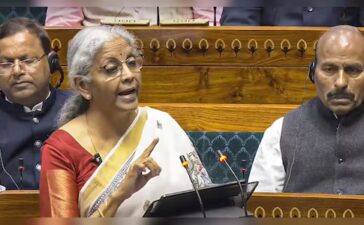2
By Hilary Schmidt, International Banker
Increasingly proving to be among the most innovative technologies within the cryptocurrency sector, decentralised finance (DeFi) is quickly establishing itself as a new paradigm for global finance. And with trillions of dollars’ worth of transactions already settled through a multitude of applications that are accessible to anyone online, DeFi technology has a bright and disruptive future—that is, if it can remain on the right side of an increasingly stringent regulatory regime.
DeFi leverages distributed ledger technologies (DLTs) to offer on-chain financial products and services, such as borrowing, lending, investing and exchanging crypto-assets, all without the need for a traditional centralised intermediary. As such, this disintermediated version of traditional finance (increasingly dubbed “TradFi”) enables highly efficient, cost-effective and automated peer-to-peer financial transactions via smart contracts and decentralised blockchain protocols. The exclusion of a centralised intermediary also means that anyone anywhere in the world can access services.
This openness has meant that DeFi has exploded in popularity, with an entire ecosystem of financial services now beginning to flourish—having liberated itself from costly, inefficient intermediaries that are frequently prone to error. Indeed, the total value locked (TVL) of tokens deposited in DeFi applications now hovers around the $90-billion mark, a level not seen since May 2022, when an initial frenzy gripped the sector. “DeFi provides internet-native alternatives to popular financial services in the form of decentralised protocols on a blockchain,” according to Jeremy Allaire, chief executive of Circle, which manages the popular stablecoin USD Coin (USDC). “Essentially, what that means is that anyone with an internet connection can take part in the global financial system, even if they don’t have a bank account.”
Among the most significant developments that have emerged from the DeFi space are decentralised exchanges (DEXs), such as Uniswap, that use automated liquidity protocols programmed by smart contracts to enable direct peer-to-peer trading without a centralised authority. Assets are exchanged based on relative values using algorithm-powered automated market makers (AMMs) programmed to buy or sell assets at various prices continuously. The Uniswap protocol provides liquidity to the market via liquidity pools of each asset’s tokens locked in smart contracts on the Ethereum blockchain. Liquidity pools are crucial within DeFi because once they are sufficiently filled with specific assets from various providers, other participants can trade against them.
Liquidity providers are incentivised to provide their assets to a liquidity pool by earning rewards that traders typically pay via a small trading fee (around 0.3 percent) for using the protocol to exchange tokens. Indeed, the trend of “liquidity mining” has seen liquidity providers offer their assets to provide liquidity to DeFi protocols, such as decentralised exchanges, in return for newly minted protocol tokens. Not only can this prove hugely lucrative for liquidity providers and more cost-effective for market participants, but without needing a centralised authority to be involved in transactions, DEXs are ultimately proving to be more efficient than prevailing TradFi methods.
DeFi has also been hugely important in popularising stablecoins—digital currencies that match the value of a traditional fiat currency (such as the US dollar) and are backed by highly liquid cash and cash-equivalent assets. Their main appeal within DeFi is that their fixed values enable market participants to earn yields by depositing them into various DeFi protocols without being exposed to the pronounced market volatility faced by other cryptocurrencies, such as bitcoin (BTC) and ether (ETH).
Investors use their fiat currencies to buy the equivalent value in stablecoins and then deposit them into DeFi protocols offering attractive yields. Indeed, among the most lucrative activities within the DeFi realm is “yield farming”, which involves seeking out high-yielding DeFi protocols in which to deposit one’s cryptocurrencies and/or stablecoins to maximise the returns on offer.
Centralised stablecoin projects, such as Circle’s USD Coin, involve the project actively ensuring that the value of its token remains in line with the value of the underlying fiat currency. It thus adjusts its reserves to preserve the ratio with the amount of minted stablecoins in circulation to ensure it has the funds available for traders wanting to cash out their stablecoin holdings. In contrast, decentralised stablecoin projects, such as MakerDAO’s DAI stablecoin, use algorithms that incentivise market participants to buy or sell tokens under various scenarios to stabilise prices at underlying fiat values.
Lending protocols, such as Aave and Compound, use blockchain and smart contracts to provide users with opportunities to borrow and lend without needing third-party involvement. A borrower seeking USDC, for example, can pledge crypto (such as ETH) as collateral, which the protocol secures until the USDC loan is repaid. The USDC lender, meanwhile, can exploit the crypto received by earning interest. However, most lending protocols require overcollateralisation before issuing a loan to protect themselves should the value of the collateral fall below the loan amount. Such lending facilities are proving revolutionary by removing credit risks and instead sufficiently overcollateralising and/or liquidating loans when the collateralisation ratio falls below a certain threshold.
But as has been the case for much of the rest of the crypto complex, it seems that DeFi will not escape regulators’ crosshairs. Indeed, the U.S. Securities and Exchange Commission (SEC) has issued Uniswap with a Wells notice, which is sent to a company before formally filing a lawsuit against it and provides the recipient with an opportunity to respond to the suit’s allegations and provide arguments for why the action should not be taken. The SEC had already begun an investigation into Uniswap Labs, the main developer of the world’s biggest DEX, in 2021, leading to the delisting of several tokens from the platform.
“Today’s Wells notice against @Uniswap is disappointing, but is not unexpected from this SEC,” Uniswap’s chief legal officer, Marvin Ammori, wrote on X, confirming the regulator’s notice. “If the SEC had authority over our self-custodial, non-intermediated products, it could tell us how to register them. It can’t, and so it doesn’t. It has provided no clarity and no guidance—as several SEC commissioners have stated in multiple dissents.” Ammori also stated that the Uniswap Protocol, web app and wallet “don’t meet the legal definitions of securities exchange or broker” and the protocol welcomes “regulations for crypto—and clear rule of law that we expect in the US—not arbitrary enforcement and continued abuse of power”.
Just as DeFi’s TVL is set to fly again, regulators seem intent on clipping its wings. With the SEC bringing action against major exchanges, including Binance and FTX, and with charges also levelled against Coinbase and Ripple, it may simply be the case that US regulators are now shifting towards DeFi and DEXs for investigations.

















